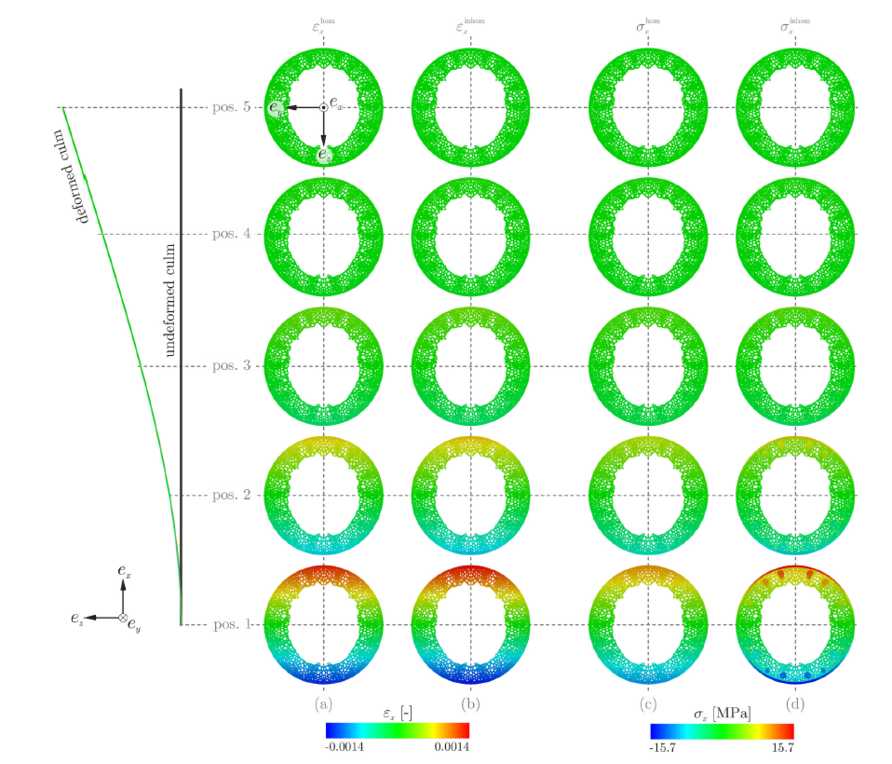To make a significant contribution to the fundamental understanding of how the internal tissue structure of the Elymus culm is related to the culm stiffness and flexibility with respect to its section height, the present work uses state-of-the-art methods such as three‐-/two-point bending experiments, histological investigations, and numerical optimisation/identification modelling. The combination of these methods generates a knowledge that is needed, to adequately model the degree of bending and associated drag forces in hydrodynamic models used to predict wave loads on landward lying coastal protection structures. In addition, it is possible to predict the likely plant culm stresses that will ultimately lead to plant breakage and removal, and thus to a temporary reduction in coastal protection. The results of this study show that knowledge of the geometric cross sectional information (cross sectional area and area moment of inertia) is indispensable for an adequate description of the mechanical behaviour of the grass culm. Especially the area moment of inertia was often overestimated in previous studies. It also becomes clear that the histological plant characteristics in the form of tissue compositions explain the differences in stiffness and thus in bending behaviour that exist between the different stem sections (bottom, middle, top). The methodology presented here, combining experimental investigations and numerical methods, has the potential to make a significant contribution to the elucidation of plant load transfer and wave-vegetation interaction in the future.
Liu, J.; Kutschke, S.; Keimer, K.; Kosmalla, V.; Schürenkamp, D.; Goseberg, N.; Böl, M. (2021): Experimental characterisation and three-dimensional modelling of Elymus for the assessment of ecosystem services. In: Ecological Engineering 166, 106233. DOI: 10.1016/j.ecoleng.2021.106233 .

